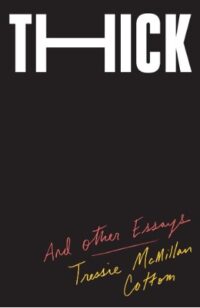



This collection is brilliant because it examines things that many power-holding white individuals would prefer to write off as anomalies. Beneath both “Girl 6” and “Black Girlhood, Interrupted” lie the questions: who gets to learn in an environment that is conducive to their learning? What kind of double-standards exist, and what damage do they cause? Cottom’s description of how black girls are treated in schools made me look back in horror on my own high school experience the ways I was handled spoke to a leniency only available to wild, self-immolating white girls, while my black peers were treated with unending suspicion and open hostility. The same goes for who’s allowed to misbehave. Cottom is quick to remind us, “In a modern society, who is allowed to speak with authority is a political act.” The omission of black female voices isn’t an oversight, but a choice that should be subject to the highest scrutiny- as Dr. Cottom encourages the heads of prestigious publications to publish the writing of black women and hire them for staff positions, not to achieve the nebulous goal of “diversity” or, worse yet, as a charitable act from the bottom of their white, intergenerational-wealth-having hearts, but because if they don’t, then these publications are missing a crucial perspective. With Thick, she deftly weaves together anthropology, sociology, and personal anecdote, and the result is a collection that speaks to her own experience while demonstrating broader truths about race in America.įor instance, in “Girl 6,” Dr. Cottom explores the structural barriers that make the bootstrap model unavailable to all but a privileged few. That is, at least, the American ethos that many of us have invested in, though in these essays, Dr.

We tend to understand our individual histories as unique to us, or as not being subject to societal limitations and pressures - if one wants to be successful, they can pull themselves up by their bootstraps, as the saying goes. It’s hard to write about the personal through an anthropological lens. I was missing the sociocultural lens she had asked us to apply I had failed to see the patterns in the patrons behavior, how they served (and didn’t serve) as a microcosm of something bigger. I wrote descriptively - almost creatively - but not anthropologically. I had tried to write descriptively and engagingly, like the writing major I was, though in her comments on my piece, the professor essentially told me I had forgotten to do the assignment. In college, I failed an anthropology assignment on thick description, the concept from which Dr.


 0 kommentar(er)
0 kommentar(er)
